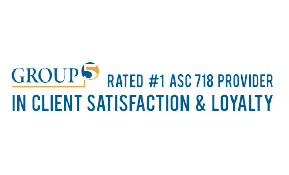Building Trust and Skills in a Low-Hierarchy Environment
At Equity Methods, we believe that a low-hierarchy environment is the foundation of relationship building and results in professional growth. When you build relationships within the organization, everyone benefits—the individual, the firm, and the client. Some of the steps we take to foster multi-level collaboration include keeping senior staff approachable, mentoring new hires, and providing exposure to multiple clients who require a cross-functional team to solve their unique needs.
We want you to grow your skills and develop professionally. The rest of us want to get better, too, so we take all ideas for improvement seriously. In fact, one of our most impactful process revamps came from a first-year associate who asked, “Why are we running this that way? There must be a better way to do this.” And out of that simple question, a new, faster, and more reliable program was born.
Top-down collaboration
Unlike a traditional hierarchy, we don’t place a lot of emphasis on rank at Equity Methods. Yes, we reward hard work, and we’re proud to have a promote-from-within culture that nurtures individuals and allows them to rise through the ranks. But we also have an open-door policy. This encourages you to learn from seniors who have worked with a particular client or been through a particular type of situation before and know which approaches are successful. Then you can put what you learned into practice with your own clients. In effect, the client benefits from the knowledge of the entire company, not just the individual.
The open exchange of dialogue also helps you form bonds with seniors and gain a support system you can lean on, not just for client-related problems but personal challenges as well. There’s more to professional services than client work. It takes practice to succeed at juggling your work and home life. Since we encourage developing a more personal relationship with seniors and directors, many feel more comfortable bringing them in on a tough problem instead of muddling through alone.
In the spirit of low hierarchy, we have a mentorship program to give those who are early in their professional services career a more structured opportunity to learn from someone with more experience. This mentor/mentee relationship is designed to inspire growth in an approachable way—think an Associate learning from a Consultant or a Senior Associate learning from a Senior Consultant.
Side-to-side collaboration
While our team works on client needs, they also work on internal initiatives to propel the company and themselves forward. This includes hosting and participating in peer-to-peer training sessions. Individuals may want to focus their development in a certain area, building up an impressive skill base that they then share with others. They create mini training sessions to teach their peers what they’ve learned in hopes of equipping them with more knowledge, making them more agile when solving a complex client problem.
We also form cross-functional teams that may span the duration of the client relationship or disband after solving a specific need. In these teams you work with colleagues whose backgrounds are very different from yours, but you still share a common goal. Although diverse teams are important, at EM your first exposure to a team is your cohort, or the people who started in your service area the same time you did. These folks work together and push one another to constantly improve their skills. Many cohorts have resulted in new roommates and lasting friendships.
Bottom-up collaboration
While many firms prioritize ideas from seniors, we know that the newest hires can have ideas that are just as effective. So every year, we set out to capture that input via our all-company survey. Our CEO reads the responses, considers all the ideas, and meets with certain individuals to learn more. Some of our standard operating practices stem from these surveys.
We also maintain an internal wiki where everyone is encouraged to share their ideas on everything from operations to architecture. Many wiki pages are managed by internal task forces aimed at reducing information asymmetries and enabling good decisions.
At EM, the uniqueness of everyone’s talent isn’t lost on us. We want to share these talents with the rest of the company. Experiences shared through a hallway conversation, training session, meeting, or even company game night result in a high level of collective knowledge and understanding. When information flows across all levels and functions, it leads to more innovative and effective solutions for our clients and enables all of us to not only advance but excel.






